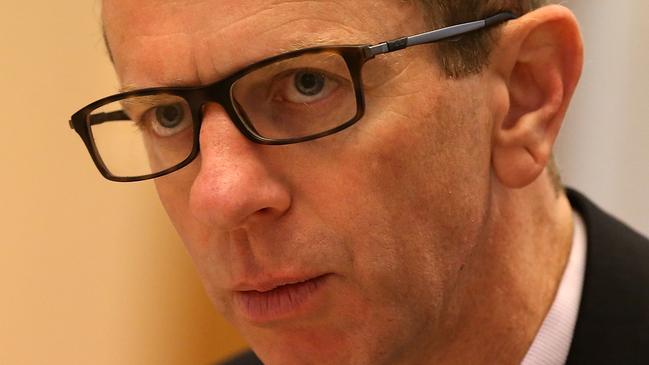ASIC targets banks and brokers for loan fraud
ASIC is ramping up surveillance of the $1.5 trillion home lending market.

ASIC is ramping up surveillance of the $1.5 trillion home lending market, with individuals and a “handful” of large and small lenders under investigation for fabrication of documents and inadequate fraud detection systems.
The project, partly funded through the $120 million in extra funding last year from the Turnbull government, will be completed by next September and include a report on the industry’s practices and the level of consumer harm.
The Australian Securities & Investments Commission’s acting chairman, Peter Kell, told The Australian that loan fraud would be a “perennial focus” for the regulator, particularly with lenders and brokers tempted to cut corners and drum up business as the housing market cooled.
“We’re upping the ante with this new project — it’s important to act quickly to send a powerful message,” Mr Kell said.
The Australian Prudential Regulation Authority, which has been closely scrutinising the home loan industry for several years as it represents 60 per cent of the industry’s lending assets, is also participating in the ASIC review. Its main focus is the quality of processes used by lenders to detect fraud and verify loan applications.
Last week, National Australia Bank said it had sacked 20 bankers and disciplined a further 32 after discovering false information had been used in applications for about 2300 home loans.
The bank said it had self-reported to ASIC in October 2015, after information from a staff member and internal system checks.
Some managers and staff had suffered consequences and were either no longer with the bank or had their bonuses cut.
The NAB case remains under investigation by ASIC, with enforcement action expected in the first half of next year.
On top of that, individuals and several major banks, second-tier lenders, non-banks and mortgage aggregators are under investigation for similar misconduct in the watchdog’s industry-wide probe. The majority of cases involve small-scale fraud by individuals or brokers who are motivated by commissions to falsify loan documents.
However, Mr Kell said there were a “handful” of other matters, similar to NAB and the large-scale home loan fraud conspiracy involving the Melbourne finance broking company Myra Home Loans, involving more sophisticated networks, which sometimes targeted communities.
“Given the size of the market, our view is that it’s not a large portion (of the overall activity), but that’s the way we want to keep it,” he said.
The Myra case involved the provision of false documents in support of loan applications submitted on behalf of Myra clients between 2008 and 2010.
Najam Shah, 58, was last month sentenced to five years in jail in relation to his role at Myra after pleading guilty to one charge of defrauding financial institutions.
As of last month, ASIC had undertaken more than 100 loan application fraud actions since becoming the national consumer credit regulator in 2010. There have been 16 criminal prosecutions and 82 administrative actions against individuals or companies, such as banning or suspension.
While ASIC believes home loan fraud is relatively contained, investment bank UBS published a note in September that estimated the value of so-called “liar loans” at $500 billion. UBS surveyed 907 borrowers who had applied for a loan in the 12 months to August and found that one-third of borrowers had not provided factually accurate information.
Leading bank analyst Jonathan Mott said the scale of the problem posed a threat to the banking system and the economy.
Any revelations of more bad behaviour by the major banks in the politically sensitive home lending market will add to the pressure for a banking commission of inquiry, despite opposition from industry leaders.
Commonwealth Bank chief executive Ian Narev told The Australian’s Competitive Advantage Forum on Thursday that the sector was already dealing with reforms and tougher regulation.
“The question I would ask is, if people want more than that, they’re saying that the justice system has failed, the political system has failed, the regulatory system has failed and bank management and bank boards have all failed, and therefore we need something on top of that,” Mr Narev said.
APRA is also participating in ASIC’s push, with the prudential regulator keen to reinforce sound lending practices as competition erodes credit quality. Chairman Wayne Byres told the Australian Securitisation Forum last week: “Aided by file reviews conducted by external auditors, we have confirmed there is more to do in this area to improve serviceability measures, particularly in relation to the assessment of living expenses and the identification of a borrower’s existing debts.”



To join the conversation, please log in. Don't have an account? Register
Join the conversation, you are commenting as Logout